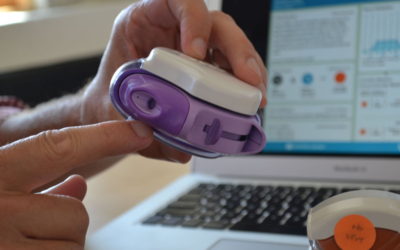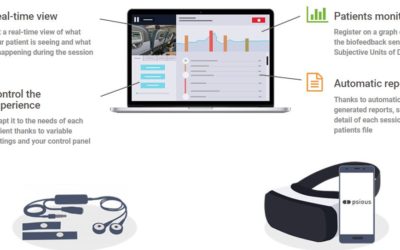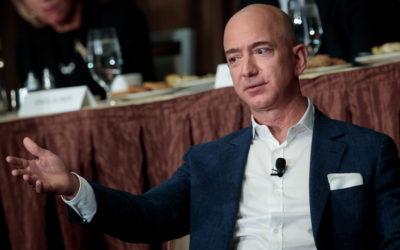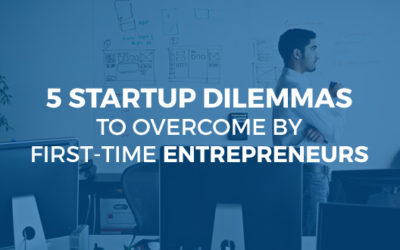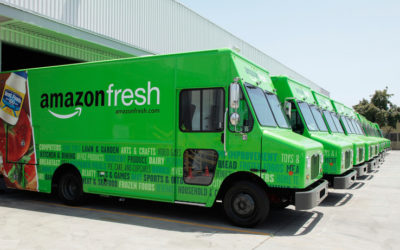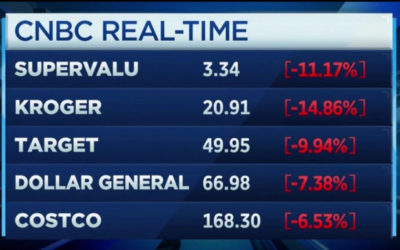AU Small Finance Bank fixes IPO price band at Rs 355-358/share, issue opens on June 28
AU Small Finance Bank fixes IPO price band at Rs 355-358/share, issue opens on June 28.
AU Small Finance Bank today said it has fixed a price band of Rs 355 to Rs 358 per share for its initial public offering (IPO).
On the upper end of the price band, the size of the IPO would be Rs 1,912 crore.
The share sale will open on June 28 and close on June 30. “It is an initial public offering of 53,422,169 shares of face value of Rs 10 each,” the company said.
Through the IPO, the group and the promoter of the company would be diluting their stake by 3 percent to 33 percent.
Other shareholders – Redwood Investment, International Finance Centre (IFC), Labh Investments, Ourea Holdings and Kedaara Capital Alternative Investments – would also partly offer their stake.
Bids can be made for a minimum of 41 shares and in multiples of 41 shares thereafter.
AU Small Finance in one of the 10 entities that were granted a small finance bank licence by the RBI in 2015.
It started operations in April this year.
Despite challenges, startups see a bright future for tech companies in Hong Kong
In the beginning [when Tink Labs started five years ago] there was barely an interest, but this year it has been significant.
That’s a good sign of folks getting interested in startups,” Yuen said.
With a population of just over seven million people, the panelists were united in agreement that bordering Shenzhen — the so-called hardware capital of the world — is a critical component for showcasing innovation, and helping find the talent need to staff tech startups.
“The opportunity is being next to Shenzhen.” “The issue of tech talent is because there’s not much of a market,” Larsen added.
“The biggest opportunity we found is the if you can survive in Hong Kong with all these head winds, the opportunity, if you can get though that, the sky is limit because you built up a tolerance to all these challenges in front of you.
That’s according to Yuen, who explained that Tink Labs — which puts concierge-style smartphones in hotel rooms — has developed its focus on different sectors of the hospitality industry thanks to Hong Kong’s diversity.
“It’s about finding the right thing Hong Kong can serve you for,” he said.
“What is Hong Kong good for and then use that as a stepping stone to a much larger opportunity.” “For us, there is a very wide variety of different kinds of hotel, different visitors, and that allowed us to improve the product very quickly,” Yuen explained.
That would make an important milestone for the country, but already the startup is helping broaden the appeal of tech to new audiences.
Larsen previously told TechCrunch that his company could go public in the coming years and, while he said IPO plans take up just “0.1 percent of our time,” he conceded that it would be another important step for the development of Hong Kong’s startup scene.
Investment in Wisconsin startups is growing, report finds
Investment in Wisconsin startups is growing, report finds.
Look to the latest numbers on early-stage investment released by the Wisconsin Technology Council, though, and things might seem more rosy.
The Wisconsin Portfolio, released last week, uses a combination of survey findings and other data sources to assess early-stage investment in the state.
The assessment for 2016: Things are trending positively, both in terms of the total investment dollars Wisconsin companies received and the number of deals.
The report says Wisconsin startups made 137 investment deals in 2016 compared to 128 in 2015 and 76 in 2011.
Daelemans said there are other noteworthy findings from the 2016 report.
He said that his work is strictly Wisconsin-focused, and that unlike the Kauffman Foundation’s publications, the report does not put findings into a national framework.
The MoneyTree report, released by accounting firm PricewaterhouseCoopers, is one of the most cited sources for state-by-state investment numbers, at least with regard to dollars from venture capital firms.
Its numbers don’t include funds raised from angel investors — wealthy individuals who want to finance startup companies.
Overall, Daelemens said that no other early stage investment report, including MoneyTree, is as comprehensive as the Wisconsin Portfolio.
15 Virtual Reality Startups in Healthcare
15 Virtual Reality Startups in Healthcare.
While a great medium for playing video games, VR just hasn’t taken off as expected and is now in the “trough of disillusionment“.
Here are 15 startups working on applying virtual reality in healthcare.
Virtual Reality Exposure Therapy Spanish startup Psious has taken in an undisclosed amount of funding to develop an exposure therapy tool which uses virtual reality.
Virtual Reality for Pain Relief Founded in 1995, Seattle startup Firsthand Technology has taken in an undisclosed amount of funding to become “the leader in Virtual Reality for healthcare” with an emphasis on VR for pain.
The firm helped establish the field of VR pain control and helped build the first VR pain relief application, SnowWorld, which was designed for patients recovering in hospital burn wards, allowing them to explore a world of snowmen and forget about their pain for a little bit.
Founded in 2015, Massachusetts startup Vicarious Surgical has taken in $3.2 million in funding to develop virtual reality software for minimally invasive surgery procedures.
Founded in 2007, VirtaMed is a Swiss company with undisclosed funding that develops & produces highly realistic surgical simulators for medical training.
One startup you should check out is Vivid Vision, a San Francisco startup that has taken in nearly $3 million to develop the world’s most advanced lazy eye treatment which is already being used by 88 clinics around the world.
Medical Training in Virtual Reality After reading about how popular virtual reality surgery startups are, it shouldn’t be a surprise to see that general medical training is quite popular as well.
Startup Showcase: An online, on-demand marketplace for car repair
Jacob Koelln created his company, CheckNGN, in order to connect consumers to a vetted and trusted network of mechanics, allowing them to post projects and accept bids from these mechanics and select the one that seems like the best fit.
What is your business?
A. CheckNGN is an automotive service iOS app that connects users with local independent repair shops.
We help consumers feel more confident about car repairs by creating transparency in price, increasing communication about the repair process itself, and ultimately, building longer-term relationships with repair shops.
I’ve never worked with a team who’s had such great respect for each other.
A. I think that a great entrepreneur is one who can focus on a goal, while being flexible enough to pivot to newfound opportunity.
That great entrepreneur is able to leverage their strong network of supporters to continuously attack a problem ailing consumers.
What is your business model and how do you make money?
Our business model is to connect repair shops with people seeking repairs in an on-demand fashion.
With CheckNGN, we can help them feel informed and empowered instead.
Startup 101: Investors learn to fund young tech companies
Startup 101: Investors learn to fund young tech companies.
But on one recent evening, investors were the ones making the pitch.
TMCx and the local accelerator Station Houston are trying to persuade wealthy people looking for investments to take a chance on the region’s startups as they try to spur innovation and to develop a Silicon Valley-like scene. “We need you to join us in investing in these companies,” said SnapStream Media founder Rakesh Agrawal, who himself has made small seed investments in dozens of young businesses.
For Houston, Agrawal and others working to build a startup scene say the solution is redirecting some to the wealth that abounds here.
The goal: persuade people with money to put it to work locally.
An audience of well-groomed businesspeople munching on catered hors d’oeuvres listened raptly as successful early-stage investors made the case for putting money into local startups. “I have clients who take risk in the tech industry, but it doesn’t necessarily need to be locally,” Goossen said.
The people trying to make a startup scene happen in Houston are hoping to change that perception – both by showcasing promising companies and by telling the story of investors who have made money by funding them.
Listening to the pitches, DeToto said he could see his clients getting interested in local tech companies as the city builds momentum behind the sector.
Winners and losers in Amazon’s $13.7B purchase of Whole Foods
It’s positioned itself as an Amazon competitor, the business is making good returns in its biggest markets, and investors believe in Instacart: the startup has raised nearly $675 million and is now valued at $3.4 billion.
There are four years left on the Whole Foods distribution partnership, noting that a source said Amazon’s purchase would not affect that arrangement.
Possible buyers: those who are would-be Amazon competitors, such as Costco or Walmart.
Google Shopping Google was early in its moves back in 2013 to square up to Amazon with Google Shopping Express.
Could this mean that Google will be looking for more food stores as partners?
Will it expand what it delivers from other partners like Costco and Target?
The startup also works with Whole Foods, and like Google may also end up losing them as a partner.
The other area that this could affect is in what markets Walmart targets: as Sarah noted in her Walmart / Amazon analysis, Amazon has saturated the middle and high ends of the market with its Prime tier.
Whether they will get the same kinds of prices as a potential acquisition like Instacart or Postmates (which we’ll get to in a second) is a different story.
Slack Amazon’s made a lot of big acquisitions, but none of them are anywhere near as big as Whole Foods.
ClassPass secures $70 million Series C led by Temasek
ClassPass, the subscription service that for fitness classes and gyms, has today announced the close of a $70 million Series C funding round led by Temasek.
According to the press release, ClassPass has doubled its member base in the past year and has now grown to 35 million reservations to date.
ClassPass works by re-tooling the fitness business model.
Plus, it gives users the added convenience of searching for and booking classes through a mobile app.
While the service has grown quickly, that’s not to say that ClassPass has had an easy journey.
Eventually, the team realized that simply providing discovery and booking didn’t necessarily lead to conversion.
With the ClassPass subscription model, however, the company has continued to thrive.
Though the price hike cost the company ten percent of its users, it seems to have worked out well for the company, which has been growing its user numbers and its usage numbers ever since.
The company has also made recent leadership changes, appointing investor Fritz Lanman to CEO and moving former CEO and cofounder Payal Kadakia to Chairman of the Board.
The release states that ClassPass will be using this funding to invest in product and expand operations.
Here are all of Amazon’s acquisitions before Whole Foods
Here are all of Amazon’s acquisitions before Whole Foods.
Amazon today said it would make a bid to acquire Whole Foods for $13.7 billion, making it the largest acquisition for the company by far.
The next-closest acquisition in price is $1.2 billion for Zappos, which happened all the way back in 2009.
Since then it’s made a few big-ticket purchases like Twitch (around $1 billion) and Kiva Systems (a bunch of robots for around $775 million), but each one still pales in comparison to the bid it made today.
And probably for good reason — Amazon is buying a wildly complex operation of grocery stores and logistical operations that keep those up and running.
Today’s bid for Whole Foods pits Amazon against Walmart and vice versa.
Walmart recently acquired online retailer Jet.
But Amazon’s huge purchase — larger by a mile than any it’s done before — sent grocery stocks across the board into a sharp decline.
It may just go to show how serious Amazon is about getting into grocery delivery and potentially brick and mortar operations if it’s willing to make an acquisition with a wildly high price tag compared to anything it’s done before.
Featured Image: Drew Angerer/Getty Images
5 Startup Dilemmas To Overcome By First-Time Entrepreneurs
But then, make sure you have a clear understanding of these few startup dilemmas that could make or mar your business.
Not surprisingly, every startup out there is trying to find an answer to this question, but then, are not really sure of which way is the ideal way–because some go after money, while for some building followers come first, inspired by Facebook and Twitter’s success stories.
Whether to focus on money or followers?
Key takeaway : Startups should think money first.
For that matter, a heavily funded eCommerce firm AskMe, which was backed by a Malaysian investor Astro, had to shut shop and had to lay off 4,000 employees in the process because of the same reason.
Key takeaway: Fix your business model first.
Key takeaway: Focus on building several products.
Startup Dilemma #4 – Data VS Assumptions You know for a fact that you can’t build your business on some lousy hypothesis.
The conference, which got scheduled in a short time, proved the detractors wrong as 300 women showed up, helping the team net $60,000.
Key takeaway: Base your business idea on solid data and not on some dreamy hypothesis.
Tejas Networks IPO gets lukewarm response; oversubscribed just 1.9 times
Tejas Networks IPO gets lukewarm response; oversubscribed just 1.9 times.
Telecom networking products company Tejas Networks received cold response for its initial public offering (IPO) as it was subscribed just 1.9 times.
Tejas Networks’ IPO comprised of fresh equity issuance of Rs 450 crore and offer sale by existing shareholders of Rs 327 crore.
Part of the fresh issue proceeds (Rs 303 crore) will be used for working capital and the remaining will be deployed for capital expenditure towards payment of salaries and wages.
The company is professionally managed with no identifiable promoter with private equity investors owning 75 per cent pre-IPO.
The price band for the IPO was Rs 250 to Rs 257 per share.
At the higher end of the price band, the issue was valued at 14.1 times its enterprise value (EV) to earnings before interest, tax, depreciation and amortisation (EBITDA) and 25 times its price to earnings (P/E) for 2016-17, said Centrum in a note.
Eris Lifesciences’ subscribed 11% on day one The Rs 1,740-crore initial public offering (IPO) of Eris Lifesciences was subscribed 11 per cent on Friday, the first day of the issue.
These investors were allotted shares at the top end of the price band of Rs 600 to Rs 603 per share.
CDSL raises Rs 154 cr from anchor investors Central Depository Services (CDSL) on Friday allotted 10.34 million shares to anchor investors at Rs 149 per share to raise Rs 154.1 crore.
Amazon is gobbling Whole Foods for $13.7 billion
Amazon is gobbling Whole Foods for $13.7 billion.
“Whole Foods Market has been satisfying, delighting and nourishing customers for nearly four decades – they’re doing an amazing job and we want that to continue.” Whole Foods will continue to operate stores under its brand and will use its same vendors and partners around the world.
By 2025 that number is expected to be $150 billion globally.
Late last year the Wall Street Journal reported on the company’s plan to expand its grocery reach beyond just Amazon Fresh.
Amazon launched its grocery delivery service in 2007, but haltingly expanded the service in fits and starts.
Now, Amazon has access to Whole Foods’ network of roughly 430 brick-and-mortar locations… It’s not the national reach of some of America’s largest grocery store chains, but it’s significant enough for most chains (and every startup in the grocery delivery space to have concerns… I’d think).
Venture investors have poured hundreds of millions of dollars into companies like Instacart, Shipt, Peapod and FreshDirect… and for those companies this has to be a major blow.
As Deliv chief executive Daphne Carmeli noted today, the deal is almost certainly a death knell for Instacart, unless Bezos and Amazon have intentions to acquire it through the ownership stake that Whole Foods already owns.
Carmeli also noted that Amazon’s vertical integration through the Whole Foods deal makes it dominant in the grocery space and could accelerate the move to online shopping.
And make the valuations for those companies a bit harder to swallow.
Amazon wants to become Walmart before Walmart can become Amazon
Amazon wants to become Walmart before Walmart can become Amazon.
The future of retail will be a combination of both online e-commerce and a brick-and-mortar retail presence – as recent moves from both Walmart and Amazon have shown, including today’s back-to-back announcements from the two rivals, which sees Amazon buying a chain of popular grocery stores with a Whole Foods deal for $13.7 billion, and Walmart picking up yet another online apparel vendor with Bonobos for $310 million.
Walmart is the only retailer with the size, scale and funds to take on Amazon, and it’s been making aggressive moves to compete with Amazon’s online business for years.
Amazon, on the other hand, has been trying to figure out how to merge brick-and-mortar stores into its world of online shopping.
The question is, which retailer will figure out the perfect mix of online and offline, and get there the quickest?
Beyond its Prime cash cow, Amazon has also made moves to better tackle the grocery business – a tough area to compete as an online-only retailer, given the need to keep fresh items cold, and others frozen.
But Amazon doesn’t have the wealth of institutional knowledge about physical retail, much less real-world grocery stores, like Walmart does.
Both systems approach the problem of bringing the costs of e-commerce down by allowing the customer to make choices about what they’re willing to do to lower item prices.
As Walmart inches into apparel through its combination of offline/online clothing shops, it can do things like offer try-on, pickup and returns of online apparel at local stores.
Amazon, on the other hand, doesn’t have a clothing retail presence.
Other grocery stocks plummet as Amazon buys Whole Foods for $13.7B
Other grocery stocks plummet as Amazon buys Whole Foods for $13.7B.
Amazon scared investors away from competing grocery stores today when it acquired Whole Foods for $13.7 billion.
Wal-Mart, Target, Costco, Kroger, and more all saw their share prices sink dramatically.
Amazon’s ecommerce empire, sophisticated trucking distribution network, advanced technology, and deep pockets could all help Whole Foods run circles around its old-fashioned rivals.
As of 11:45am eastern, here’s the grim state of the rest of the grocery industry: Amazon: +2.91% to $992.21 Wal-Mart: -6.02% to 74.16 Target: -9.52% to $51.14 Costco: – 5.89% to $169.48 Kroger: -12.34% to $21.53 Dollar General: -5.17% to $68.58 SuperValu: -13.56% to $3.25 Sprouts Market: -6.38% to $20.99 Smart & Final Stores: -14.96% to $9.52 Weis Markets: -5.30% to $48.22 Ingles Markets: -4.57% to $33.40 After tech octopus Amazon bought a grocery store, you can expect the other grocery stores to acquire or invest in building more tech to try to keep up.
It seems Amazon has realized there’s a huge opportunity in owning the staples of the modern world, from AWS servers that run your favorite apps, to Amazon Prime that delivers everything between packaged goods and streaming movies, and now your local fancy grocer.
The Startup Acquisition Process: The Magic Behind the Merge
Today was the day Nazar would announce to the world that he had just sold the company he had worked on for eight long years for a reported $50 million to Fortune 500 powerhouse Intuit.
How did Nazar as a first-time entrepreneur get the acquisition process started?
How did he know it was even time to sell?
We had raised venture capital and had a lot of folks counting on the success of the company.
But that alone doesn’t make selling your company any easier.
I was feeling great about the business, but I had also been working non-stop building the company for eight years, I was moving into a different phase of my personal life, and wanted to make sure we had a great outcome for all the stakeholders of the business.
Most of our early investors got a 10X on the deal and some even got 20X.
Nazar knew that the rate that Docstoc was growing was beyond any of the lines of business that Intuit was currently running.
In an acquisition, the deal that gets done is more or less the final deal.
A few key points that Nazar pointed out are: What’s the term of due diligence?
The Startup Acquisition Process: The Magic Behind the Merge
Today was the day Nazar would announce to the world that he had just sold the company he had worked on for eight long years for a reported $50 million to Fortune 500 powerhouse Intuit.
How did Nazar as a first-time entrepreneur get the acquisition process started?
How did he know it was even time to sell?
We had raised venture capital and had a lot of folks counting on the success of the company.
But that alone doesn’t make selling your company any easier.
I was feeling great about the business, but I had also been working non-stop building the company for eight years, I was moving into a different phase of my personal life, and wanted to make sure we had a great outcome for all the stakeholders of the business.
Most of our early investors got a 10X on the deal and some even got 20X.
Nazar knew that the rate that Docstoc was growing was beyond any of the lines of business that Intuit was currently running.
In an acquisition, the deal that gets done is more or less the final deal.
A few key points that Nazar pointed out are: What’s the term of due diligence?
The Startup Acquisition Process: The Magic Behind the Merge
Today was the day Nazar would announce to the world that he had just sold the company he had worked on for eight long years for a reported $50 million to Fortune 500 powerhouse Intuit.
How did Nazar as a first-time entrepreneur get the acquisition process started?
How did he know it was even time to sell?
We had raised venture capital and had a lot of folks counting on the success of the company.
But that alone doesn’t make selling your company any easier.
I was feeling great about the business, but I had also been working non-stop building the company for eight years, I was moving into a different phase of my personal life, and wanted to make sure we had a great outcome for all the stakeholders of the business.
Most of our early investors got a 10X on the deal and some even got 20X.
Nazar knew that the rate that Docstoc was growing was beyond any of the lines of business that Intuit was currently running.
In an acquisition, the deal that gets done is more or less the final deal.
A few key points that Nazar pointed out are: What’s the term of due diligence?
The Startup Acquisition Process: The Magic Behind the Merge
Today was the day Nazar would announce to the world that he had just sold the company he had worked on for eight long years for a reported $50 million to Fortune 500 powerhouse Intuit.
How did Nazar as a first-time entrepreneur get the acquisition process started?
How did he know it was even time to sell?
We had raised venture capital and had a lot of folks counting on the success of the company.
But that alone doesn’t make selling your company any easier.
I was feeling great about the business, but I had also been working non-stop building the company for eight years, I was moving into a different phase of my personal life, and wanted to make sure we had a great outcome for all the stakeholders of the business.
Most of our early investors got a 10X on the deal and some even got 20X.
Nazar knew that the rate that Docstoc was growing was beyond any of the lines of business that Intuit was currently running.
In an acquisition, the deal that gets done is more or less the final deal.
A few key points that Nazar pointed out are: What’s the term of due diligence?
